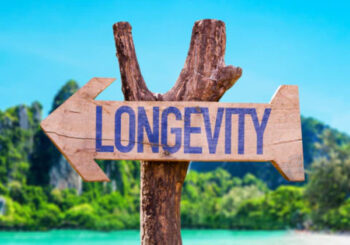Guest Writer for Wake Up World
Do you ever wish you could know the secrets to a long and happy life? You can, thanks to the world’s “blue zones.” Okinawa, Japan is one such zone. This small chain of islands maintains one of the largest concentrations of centenarians anywhere in the world. So, what gives Okinawans the longevity advantage? Like all “Blue Zone” communities, there is a formula for their success that we can all learn from, no matter where we live!
What are Blue Zones?
In the early 2000s, award-winning journalist, nutritional expert, and explorer Dan Buettner, author of The Blue Zone books and programs, traveled around the world with a team of researchers. Their goal was to discover the places on earth that had the largest number of people over 100 years of age. In the end, five regions rose to the top. They were:
- Nuoro Province in Sardinia, Italy
- Ikaria, Greece
- Nicoya, Costa Rica
- The Seventh-day Adventist Community of Loma Linda, California
- Okinawa, Japan
Looking at this list, you would be hard pressed to find a more diverse group of cultures and geographies! What Buettner and the rest of the team discovered, however, was that the people who live in these communities actually have a lot in common. The centenarians in each of these regions:
- Ate mostly a plant-based diet which included legumes
- Drank moderately
- Avoided smoking
- Had a strong sense of purpose and spiritual connection
- Had the support of family and friends
- Were engaging in their community
- Made moderate, constant physical activity a part of their daily life
Amongst the Okinawans, these factors were simply part of the way they had always lived. Like their cuisine, their active and engaged lifestyle had been with them for generations and were firmly ingrained in their culture.
Maybe Okinawans Just Have “Good Genes?”
Older Okinawan women live longer on average than any other women in the world, and older Okinawans of both sexes have less heart disease, dementia, and cancer than Americans. Could all this longevity just be a matter of “good genes?”
The question was one of many that the Okinawan Centenarian Study research team examined. Their research did conclude that genetics may play some role in why so many people within the same Okinawan family tended to live past 100. However, the investigators also acknowledged that genetics is only one small part of the larger whole. Of much greater importance is how traditional Okinawans eat, move, and live their lives every day.
Further proof of this can be seen in the sad state of the younger generations of Okinawans when compared to their elders. Due in large part to the influx of fast food chains catering to American military base personnel stationed on the island, today’s 40-something and younger Okinawans consume more proteins and fats and less complex carbohydrates than their older counterparts. They are also more likely to be in work environments and engage in lifestyle habits that replicate the United States, the UK, and other “modernized” regions.
This has resulted in a corresponding (and not surprising) decline in life span amongst the majority of young Okinawans. According to some accounts, roughly half of Okinawan men in their forties are obese. In addition, a recent CNN report stated that while Okinawans aged eighty and above still flourish, the younger generations are succumbing to lifestyle-related conditions, mostly heart disease, at a faster rate than most Japanese in general.
The Nuts and Bolts of the Traditional Okinawan Diet
A 2014 blue zone study conducted in part by Okinawa International University found that “high intake of unrefined carbohydrates, moderate protein intake with emphasis on vegetables/legumes, fish, and lean meats as sources, and a healthy fat profile (higher in mono/polyunsaturated fats, lower in saturated fat; rich in omega-3)” were all primary factors that led to “low glycemic load, less inflammation, and low oxidative stress” amongst older Okinawans.
Most daily meals for Okinawan centenarians are vegetarian. A meal typically consists of sweet potatoes, tofu, and stir-fried vegetables. Portions are small, and the diet is naturally low in calories overall. Traditional eaters obtain additional fats and protein from healthy, lean sources in the form of pork and fish. It should be noted, however, that these animal proteins are consumed in small amounts and not every day. Almost all of what traditional eaters consume comes from local sources.
The traditional Okinawan diet is naturally low in sugar, unhealthy sources of sodium, and extra additives. Older Okinawans do enjoy simple carbs such as noodles and rice, but these are kept to a relatively low amount as well. Also, most “partake” in alcoholic libations on occasion, especially the traditional Okinawan sake’ drink called Awamori (also known as “island sake” or shima for short).
One of the biggest takeaways regarding diet amongst traditional Okinawans has to do with their reliance on homegrown vegetables as their primary food source.
We all know how great fresh, organic vegetables can be for our health! Study after study has shown that getting more vegetables in your diet—especially the colorful ones—can improve immune function, lower inflammation, balance gut flora, up energy levels, help maintain a balanced state of mind, and even improve complexion. Vitamins, minerals, antioxidants, fiber, a multitude of phytonutrients—the list goes on as to all the good stuff eating vegetables can expose you to. Vegetables are also low in calories, so eating a lot of them (like the Okinawans do) helps to keep calories down. This, in turn, keeps weight down too.
Besides what to eat, there are some ground rules for how to eat if you are an Okinawan centenarian as well. “Hara Hachi Bu” is a Confucian concept that helps to remind people to stop eating when they are 80% full. Some estimates state that traditional Okinawans consume only about 1,200 calories a day. What they eat is very nutrient-rich, however, so they are able to not only survive, but thrive, on less.
What Makes the Okinawan Diet Unique?
Each blue zone region has particular foods and customs that are unique to them. Okinawa is no exception. Okinawan communities in the past have consisted mostly of farmers and fishermen. Because of this, over the years, the residents of the Okinawan island chain have developed their own type of cuisine, which consists of not only locally-produced, regional vegetables but also herbs, fermented foods, and seaweeds. Here are just a few of the foods you may find on a typical Okinawan plate:
Sweet Potatoes
According to Buettner, roughly 67% of the Okinawan diet is made up of sweet potatoes, although other accounts say that it may be a little less. Pretty much everyone agrees, however, that Okinawans eat a lot of them. They are definitely a staple in the Okinawan diet.
The amount of sweet potatoes Okinawans eat may account in large part for their longevity, since these tubers are said to be one of the healthiest foods on the planet. Sweet potatoes are a great source of plant-based protein and fiber. As starchy vegetables go, they also have a fairly low glycemic index. They contain essential minerals like magnesium, calcium, and potassium as well as vitamins C and A. Sweet potatoes are also a great source of antioxidant-rich carotenoids.
Heart disease is the number one cause of mortality as we age. According to a 2011 study conducted at the University of Navarra in Spain, consuming foods with a high antioxidant load like sweet potatoes can significantly lower your risk for cardiovascular disease.
Goya
Another name for goya is bitter melon. The Okinawan consumption of large amounts of goya is not unusual as it is a staple in most Japanese kitchens. Buettner’s team was especially interested in this vegetable’s longevity capabilities since it has compounds in it that can lower blood sugar and help prevent diabetes.
Seaweed
The cuisine of the region is practical, which means that what is easy, cheap, and healthy will more than likely wind up on the plate. This is in large part why Okinawans tend to eat a lot of seaweed, as does the rest of Japan.
Seaweed is packed with nourishing and hormone-balancing minerals, vitamins, antioxidants, and other phytonutrients. Vitamins A, C, B, E, and K can be found in many seaweed varieties as well as zinc, calcium, sodium, and magnesium. Iodine and tyrosine in seaweeds support the thyroid. Seaweed can also be a good source of B12, healthy omega 3 fats, and polysaccharides that can heal the gut.
One of the most potent substances found in seaweed is iodine. Japanese women as a whole have some of the lowest rates of breast cancer, and this has been attributed, in large part, to high consumption of iodine and other cancer-busting phytonutrients in seaweed.
Fermented Soy
All blue zone cultures consume legumes in some form. In Okinawa, as in most of Japan, soybeans and soybean products like tofu, miso, and natto are the primary kinds of legumes.
While most health-conscious individuals know of the benefits of non-GMO, organic tofu and fermented miso products, not many outside Asia are familiar with natto. Rich in vitamins and minerals, natto is a staple in Okinawa. It contains large amounts of K2 vitamin and is a natural source of calcium for strong bones. It also has phytonutrients within it, which are linked to heart health and immune-boosting.
Because it is fermented, natto is also rich in the beneficial bacteria Bacillus subtilis. According to an investigation conducted by researchers at the University of Naples, B. subtilis supports the production of enzymes in the gut that are vital for the breakdown of fats, proteins, and sugars.
Medicinal Mushrooms
According to the Okinawa Centenarian Study, the population also eats a large amount of mushrooms. Varieties that are popular in Okinawa include Shiitake, Chaga, and Reishi. Medicinal mushrooms such as these have been proven to be incredibly beneficial for the body as a whole. They can boost immunity, reduce inflammation, clear up digestive issues, improve brain health, and much more. A 2017 study published in the Journal of Medicinal Food found that consuming a variety of medicinal mushrooms on a regular basis helps prevent common, age-related neurodegenerative diseases.
Healing Herbs and Spices
Okinawan cuisine draws some of its characteristics from other Asian cultures. This is especially true when it comes to spices. Turmeric is well known for its anti-inflammatory and immune-boosting properties. Mugwort, on the other hand, not so much, although it has been used as a medicinal herb in China for centuries. In Asia, mugwort is seen as a tonic and an energy booster and can be helpful for digestive upset and general GI tract health. It can also support brain health and can reduce inflammation.
What About the Okinawan Lifestyle?
In the second edition of the Blue Zone book, Buettner outlines 9 lessons that we all can learn from blue zone regions. Interestingly, only a few, which we have highlighted above, have to do with eating habits. The others concern how Blue Zone centenarians live their lives in general. They include:
1 | A Sense of Purpose. “Ikigai” can be translated loosely from Japanese to mean “a reason for being.” Whether their sense of purpose comes from their families, their line of work, or their spiritual connection, traditional Okinawans know the importance of cultivating a strong sense of purpose that they can draw gratitude and satisfaction from every day.
2 | Putting Loved Ones First. Okinawans are very dedicated to their families. Traditional Okinawans place a high value on life partners and taking care of aging parents and grandparents as well as children.
3 | Finding the Right Tribe. The “moai” is the Japanese word for a lifelong circle of friends. Okinawans maintain strong social networks. In addition, friends tend to stay connected to each other throughout a person’s life as part of Okinawan cultural traditions.
4 | A Sense of Belonging. Having a clear sense of purpose, being very involved with their families and having a strong bond with friends (that often lasts a lifetime) naturally helps older Okinawans maintain a sense of belonging in their community, in their culture and in their world.
5 | Move Naturally. One of the most interesting characteristics of blue zone centenarians is their relationship to movement. Most don’t really go “to the gym” for a workout. Instead, they make movement a constant part of their day.
“The world’s longest-lived people don’t pump iron, run marathons or join gyms,” says Buettner. “Instead, they live in environments that constantly nudge them into moving without thinking about it. They grow gardens and don’t have mechanical conveniences for house and yard work.”
On the islands of Okinawa, this usually means bicycling, walking, fishing, practicing martial arts, working in the garden, or taking care of household chores with muscle power instead of technology.
6 | Down Shift. The final non-diet characteristic of blue zone people is that they have daily practices that help them “slow down” and bring stress levels down throughout the day. A lot of the movement activities mentioned above serve this purpose for Okinawans. “Down shifting” may also take the form of an afternoon nap, doing some light reading, or simply sharing a laugh with a friend. Fun, relaxation, comradery, and laughter is very much a part of Okinawan life.
What We Can Learn from Traditional Okinawans
When we first heard of the blue zone communities and Okinawa in particular, we used the information as a rubric to evaluate the “longevity and happiness factor” in our own lives. Of course, for those of us who are living, working, and raising a family in today’s fast-paced modern world, it is pretty unrealistic to think that we can “stop everything” and adopt an Okinawan lifestyle. We can, however, use the Okinawan way of eating and living as a rubric by which to consciously up the bar when it comes to healthy habits in our own lives.
Are you living your life with purpose? Do you have the support from family and friends that you need? Are you eating in a way that is the most nourishing for your body? Do you make it a priority to move in some way every day?
If you do, then you are already on your way to adopting your own unique version of the “Okinawan Diet!” If not, then we suggest letting these wise centenarians be your inspiration on your journey as you discover your own way of living a long, happy, and engaged life.
Originally published at The Truth About Cancer and reproduced here with permission.
About the author:
 Ty Bollinger is a health freedom advocate, cancer researcher, former competitive bodybuilder and author. After losing several family members to cancer, he refused to accept the notion that chemotherapy, radiation, and surgery were the most effective treatments available for cancer patients. He began a quest to learn all he possibly could about alternative cancer treatments and the medical industry. What he uncovered was shocking. There is ample evidence to support the allegation that the “war on cancer” is largely a fraud and that multinational pharmaceutical companies are “running the show.” Ty has now made it his life mission to share the most remarkable discovery he made on his quest: the vast majority of all diseases, including cancer, can be easily prevented and even cured without drugs or surgery.
Ty Bollinger is a health freedom advocate, cancer researcher, former competitive bodybuilder and author. After losing several family members to cancer, he refused to accept the notion that chemotherapy, radiation, and surgery were the most effective treatments available for cancer patients. He began a quest to learn all he possibly could about alternative cancer treatments and the medical industry. What he uncovered was shocking. There is ample evidence to support the allegation that the “war on cancer” is largely a fraud and that multinational pharmaceutical companies are “running the show.” Ty has now made it his life mission to share the most remarkable discovery he made on his quest: the vast majority of all diseases, including cancer, can be easily prevented and even cured without drugs or surgery.
For more information, visit:

If you've ever found value in our articles, we'd greatly appreciate your support by purchasing Mindful Meditation Techniques for Kids - A Practical Guide for Adults to Empower Kids with the Gift of Inner Peace and Resilience for Life.
In the spirit of mindfulness, we encourage you to choose the paperback version. Delve into its pages away from screen glare and notifications, allowing yourself to fully immerse in the transformative practices within. The physical book enriches the learning process and serves as a tangible commitment to mindfulness, easily shared among family and friends.
Over the past few years, Wake Up World has faced significant online censorship, impacting our financial ability to stay online. Instead of soliciting donations, we're exploring win-win solutions with our readers to remain financially viable. Moving into book publishing, we hope to secure ongoing funds to continue our mission. With over 8,500 articles published in the past 13 years, we are committed to keeping our content free and accessible to everyone, without resorting to a paywall.







